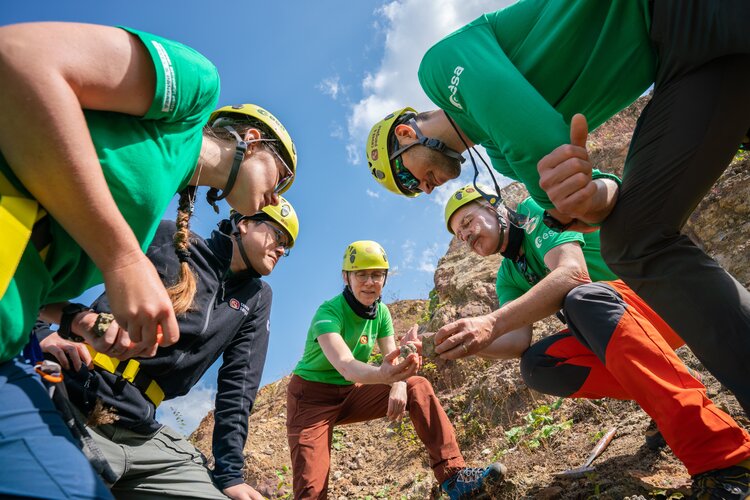Astronauts and planetary geologists gather around intriguing rocks at the Ries crater in southern Germany.
These rocks offer mineralogical evidence of a cataclysmic event 15 million years ago, when a 1.5-km-wide asteroid travelling at 70 000 km per hour struck Earth. The impact released the energy of a million atomic bombs in a few seconds, leaving behind a 25 km crater still visible today – one of the best-preserved impact sites on Earth.
ESA astronaut Rosemary Coogan, Japan’s space agency astronaut Norishige Kanai and European astronaut reserve member Arnaud Prost examine the impact rocks that bear witness to this event in the Aumühle quarry.
The rocks in the hands of planetary geologists Harald Hiesinger and Carolyn van der Bogert are bunte breccia (bunt meaning ‘colourful’ in German) and suevite. When the crater formed, these rocks were shattered and ejected as a chaotic mixture of fragments in varying colours.
The breccia and suevite provide insight into the geological puzzle the astronauts must decipher, piece by piece, during ESA’s PANGAEA geology training. A solid understanding of planetary formation is crucial for astronauts who might one day walk on the Moon.
Rosemary, Arnaud and Norishige are following in the footsteps of Apollo 14 and 17 astronauts, who more than half a century ago chose this site as a crater simulator before their missions to the Moon.
The seventh edition of PANGAEA takes the novice geologists from theory-packed lessons to field trips across Europe, including the Bletterbach canyon in Italy, the Ries crater in Germany, and the volcanic landscapes of Lanzarote, Spain.
The astronauts learn to document their findings, understand the geology behind a landscape, and evaluate landing sites for future Artemis missions with scientific objectives in mind.
Throughout PANGAEA, the training increases in complexity and astronauts face challenges in real environments. As the trainees progress, they experience a shift in perspective, finding motivation in the pursuit of scientific discoveries.
For the latest news and pictures on ESA’s PANGAEA, visit the official blog and Flickr gallery.



 Image:
A geological puzzle
Image:
A geological puzzle